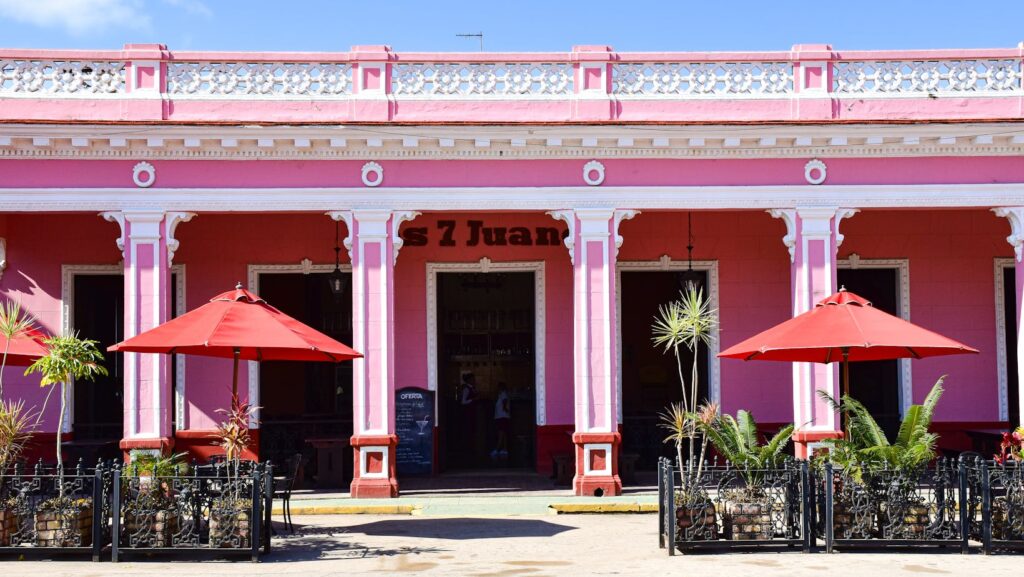From the indigenous Taino people’s culinary traditions to Spanish, African, and Caribbean influences, Cuban cuisine is a vibrant mix of flavors and techniques. It’s a testament to the island’s rich cultural history, reflecting the ebb and flow of its diverse influences. You’re about to uncover the stories behind your favorite Cuban dishes, and perhaps, discover new ones to try.
Cuban Food History
Cuban cuisine, in its inception and evolution, represents a culinary amalgamation involving diverse culinary customs and traditions. Its evolution owes itself to ancient indigenes, colonization, and transitions caused by continuous migratory encounters. The cuisine thus produces a palatable symphony of flavors that echoes the island nation’s history.
Indigenous Influences
When you trace the foundational roots of Cuban food, it’s the indigenous Taino people you’ll find at the start. Their diet consisted heavily of root vegetables, specifically cassava, sweet potatoes, and yucca, along with an array of tropical fruits. Their cooking methods, predominantly roasting and grilling, still play an influential role in today’s Cuban cooking techniques. These native influences, vital to the Cuban food history, persist, shaping dishes like ‘Ajiaco,’ a stew combining locally sourced root vegetables, meats, and spices – a true reflection of Taino traditions.

Spanish and African Contributions
Spanish culinary influences entered Cuba with colonial conquests, reshaping the local cuisine. Mainstays of Spanish cooking, like rice, onions, garlic, and other spices, merged seamlessly into Cuban dishes, offering a new depth of flavor. Look no further than the beloved ‘Ropa Vieja,’ a dish of stewed beef in a tomato sauce base, generously seasoned with Spanish favorites like onions and bell peppers.
The African influence on Cuban cuisine is just as indelible. Enslaved Africans brought to the island by the Spanish introduced techniques, like frying, and ingredients, like plantains and okra, which then became staples in Cuban cooking. Cook-up, a one-pot dish filled with rice, meat, and vegetables are key examples of African techniques and ingredients accentuating Cuban cuisine.
Cuban Food in Modern Times
In this contemporary era, the panorama of Cuban cuisine has undergone significant shifts. The sector has evolved from its traditional roots, embracing the change influenced by elements of tourism, fusion, and culinary innovations. At this juncture, let’s have a detailed dive into how modern times have brought changes to Cuban gastronomy.
Impact of Tourism on Cuisine
Tourism brings transformation, and Cuban cuisine is no exception to this fact. It has resulted in the introduction of an array of foreign flavors, creating a new blend in the culinary landscape. New dishes such as ‘Picadillo a la Habanera’, a concoction of beef and tomato, indicate international influence, while traditional cuisine remains robust, for instance, ‘Congri’ – a combination of rice mixed with black beans.
From dining in state-run restaurants or ‘paladares’, tourists explore the authentic taste of Cuba, thereby enabling the preservation of classic culinary. As statistics indicate, 4.5 million tourists visited the island in 2019, authenticating that the impact of tourism on Cuban cuisine is undeniable.

Fusion and Innovations in Cuban Cooking
Innovative endeavors and fusion have particularly marked their significant impact in contemporary Cuban cooking. Cuban chefs, aiming to preserve the traditional while introducing an innovative panache, have crafted dishes that are a fusion of traditional ingredients and global delicacies.
An example is ‘Lobster Enchilado’, a dish that uses traditional Cuban Creole sauce yet which incorporates lobster – a worldwide favored seafood. Another innovative creation, ‘Lechón’ – a roasted pork dish cooked with Chinese techniques, showcases the blend of Cuba’s gastronomic history with modern culinary developments.
Thus, in modern times, Cuban cuisine dances on the tunes of fusion and innovation, painting a vibrant picture of tradition and global influence in every dish served on the table. Remember, each bite of Cuban food today narrates a tale of evolving culinary tradition, fusion, and culinary innovations.
Cuban cuisine is a flavorful fusion of tradition and global influence, a testament to its evolving culinary traditions and innovations. It’s a gastronomic tale told on a plate, a delicious narrative of Cuba’s vibrant history and culture. And you, dear reader, are part of this ongoing story. So, here’s to the next chapter in your Cuban culinary adventure.
